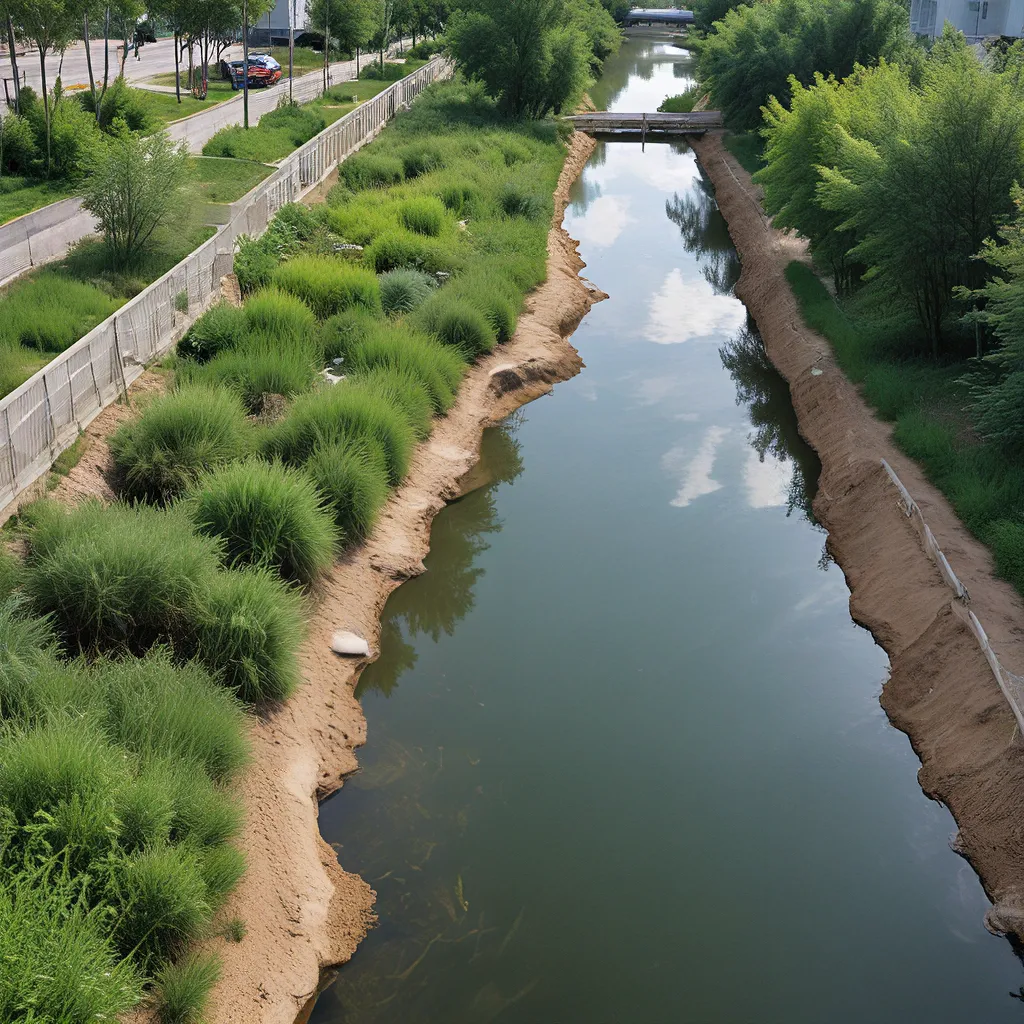
As an environmental enthusiast, I’ve always been fascinated by the intricate relationship between our cities and the natural world. It’s a delicate balance – one that we humans often struggle to maintain. But recently, I stumbled upon a fascinating concept that has me truly excited: the idea of integrating wastewater treatment with urban green infrastructure.
Now, I know what you’re thinking – “Wastewater treatment and urban greenery? How on earth could those two possibly go hand-in-hand?” Bear with me, my friends, because this is where things start to get really interesting.
Imagine a world where the very systems designed to clean our water also contribute to the lush, vibrant landscapes of our cities. It’s a concept that’s been gaining traction in the world of sustainable urban development, and the potential benefits are nothing short of transformative.
The Untapped Potential of Wastewater Treatment
Let’s start by taking a closer look at wastewater treatment. Traditionally, these facilities have been seen as necessary evils – essential for maintaining public health and environmental wellbeing, but often relegated to the industrial outskirts of our cities, hidden from view and forgotten.
However, a growing body of research suggests that we’ve been seriously underestimating the potential of wastewater treatment to do so much more. According to a recent study, these facilities can serve as hubs for a wide range of ecosystem services, providing benefits that go far beyond their primary function of cleaning water.
For example, did you know that wastewater treatment plants can be designed to support urban agriculture, providing nutrient-rich water and even compost for local food production? Or that they can be integrated with constructed wetlands to create beautiful, biodiversity-rich green spaces within our cities?
The possibilities are truly endless, and that’s where the concept of urban green infrastructure comes into play.
Unlocking the Power of Urban Green Infrastructure
Urban green infrastructure refers to the strategic integration of natural and semi-natural elements within the built environment. This can include everything from parks and gardens to green roofs, permeable pavements, and urban forests.
The benefits of urban green infrastructure are well-documented. These green spaces improve air quality, reduce urban heat island effects, and provide valuable habitats for wildlife. They also offer important recreational and mental health benefits for city dwellers, who often find solace in the presence of nature.
But when you combine urban green infrastructure with wastewater treatment, the synergies become truly remarkable. By incorporating green elements into the design and operation of wastewater facilities, we can create a virtuous cycle that enhances ecosystem services and improves the overall sustainability of our cities.
Imagine a wastewater treatment plant that doubles as a thriving urban wetland, complete with meandering streams, lush vegetation, and a diverse array of bird and insect life. Or a facility that integrates green roofs and vertical gardens, not only improving its aesthetic appeal but also contributing to the city’s overall urban cooling and stormwater management.
The research suggests that these types of integrated systems can provide a wide range of benefits, from improved water quality and nutrient cycling to enhanced biodiversity and increased property values for surrounding neighborhoods.
Overcoming Challenges and Realizing the Vision
Of course, integrating wastewater treatment with urban green infrastructure is not without its challenges. There are complex technical, regulatory, and financial considerations that must be navigated to bring these ambitious visions to life.
For instance, some experts believe that the initial costs of implementing integrated systems can be higher than traditional approaches, and there may be concerns about the long-term maintenance and operation of these hybrid facilities.
Additionally, there are often regulatory hurdles to overcome, as wastewater treatment and urban planning are often siloed within different government agencies and policy frameworks.
But the potential rewards of this approach are simply too great to ignore. By overcoming these challenges, we can transform our cities into vibrant, sustainable hubs that seamlessly blend human and natural systems – and Alpha Wastewater Services is proud to be at the forefront of this exciting shift.
A Future of Thriving Ecosystems and Resilient Communities
As I delve deeper into this topic, I can’t help but feel a sense of optimism and wonder. The idea of turning our wastewater treatment facilities into catalysts for urban ecosystem restoration and enhancement is truly inspiring.
Imagine strolling through a lush, wetland-inspired park that also happens to be cleaning and purifying the very water we depend on. Or enjoying the soothing sound of flowing streams while knowing that those waters are being carefully managed and returned to the environment in a sustainable manner.
These are the kinds of transformative visions that are driving the integration of wastewater treatment and urban green infrastructure. And as the research continues to evolve, and innovative technologies and design approaches emerge, I have no doubt that we’ll see these ideas take root in cities around the world.
So, the next time you hear the term “wastewater treatment,” I encourage you to think beyond the traditional notions of pipes and tanks. Instead, envision a future where these critical systems are seamlessly woven into the very fabric of our cities, enhancing our quality of life, supporting vibrant ecosystems, and creating a more resilient and sustainable urban future.
After all, when we dare to think big and embrace the power of nature-based solutions, the possibilities are truly endless. And that, my friends, is what gets me truly excited about the future of our cities.